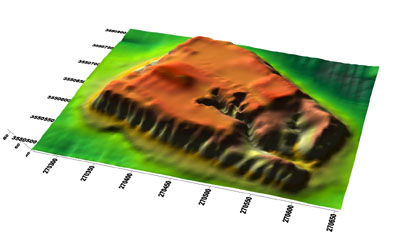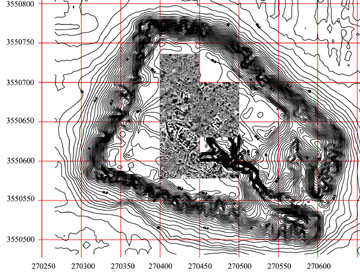| Modified: |
|||||
| Archaeological Research at Dehno | |||||
| Geographical Situation | History of Research | Historic Overview | Current Project | Bibliography | |||||||||||||||||||||||
| Deutsch | |||||||||||||||||||||||||||
| Deutsch | |||||||||||||||||||||||||||
| Bibliography | Gallery | ||||||||||||||||||||||||||
|
Recent Research Activity
Dehno seems to have been settled since 4th millennium B.C. to the Islamic period. It therefore provides a good opportunity to carry out a chronological study of pottery and other objects. This could help to clarify some questions regarding Elamite chronology. Therefore the aim of our research was to document the chronological sequence of pottery. An excavation campaign in May 2012 was financed by the Johannes Gutenberg University of Mainz (Germany) which was carried out in cooperation with the Iranian Cultural Heritage Organisation. At the beginning we prepared a topographic map of the ancient site. The geomagnetic prospection of 2002 was added to the map. We found out that during the last ten years large parts of the ancient constructions were eroded because of the intense winter rains. Some ravines were formed in the course of time which are enlarged yearly about half a meter.
The pottery and other findings were documented chronologically. The results of the campaign are in preparation and will be published in the next issue of ELAMICA (www.elamica.com). The research shall be continued based on a memorandum between the Iranian Cultural Heritage Organisation and the Johannes Gutenberg University of Mainz. |
|||||||||||||||||||||||||||
 |
|||||||||||||||||||||||||||
| 3D Map of Dehno | |||||||||||||||||||||||||||
 |
|||||||||||||||||||||||||||
| Topographic Map of Dehno with the Geomagnetic Prospection | |||||||||||||||||||||||||||
| Back to Home | |||||||||||||||||||||||||||
|
(C) 2012 B. Mofidi-Nasrabadi
|
|||||||||||||||||||||||||||
| The Excavated Area | |||||||||||||||||||||||||||
| Tomb from the Sukkalmah Period | |||||||||||||||||||||||||||